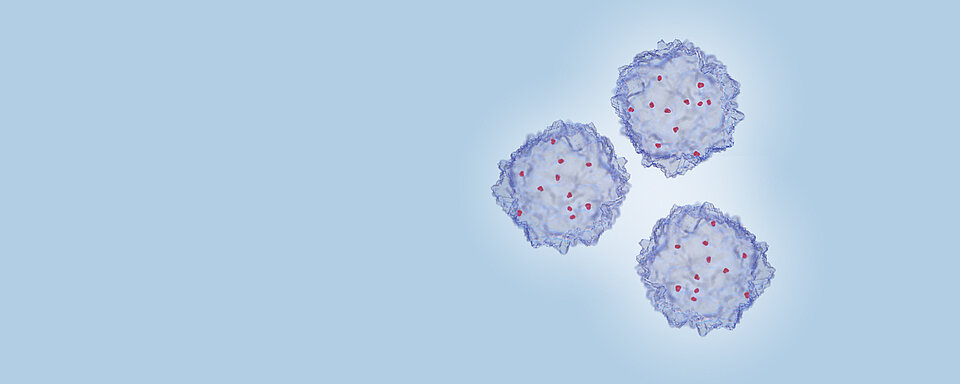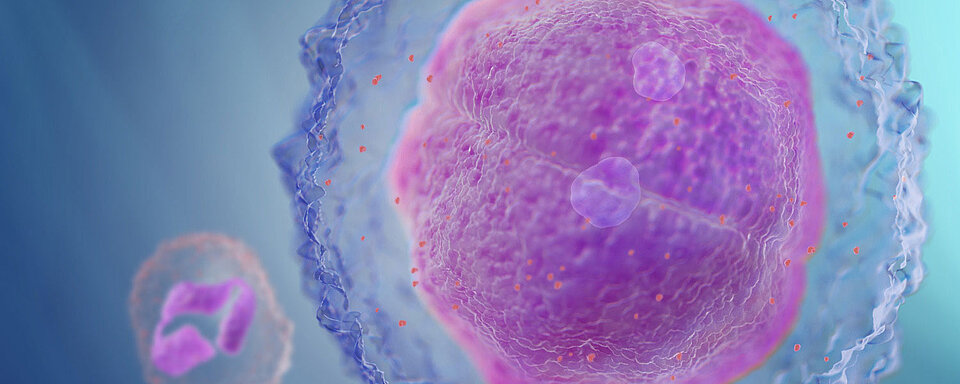Immature Platelet Fraction – IPF
What is Immature Platelet Fraction counting?
IPF levels rise as bone marrow produces more platelets. Measuring IPF therefore reflects bone marrow platelet production from a peripheral blood sample similar to how a reticulocyte count could provide a measure of red cell production.
The immature platelet fraction is a modern parameter that measures young and more reactive platelets in peripheral blood. Sysmex’s XN-Series haematology analysers equipped with PLT-F offer two diagnostic parameters; the absolute immature platelet count (IPF#) and the fraction of immature platelets related to mature platelets (IPF%).
Why count immature platelets?
IPF has a high clinical utility in the laboratory diagnosis and treatment of thrombocytopenia since raised IPF levels are related to increased peripheral platelet destruction. It is particularly useful for supporting the diagnosis of autoimmune thrombocytopenic purpura, thrombotic thrombocytopenic purpura and for distinguishing these from bone marrow suppression or failure. In the latter, the IPF value would be low.
The IPF can be a sensitive measure for evaluating thrombopoietic recovery during aplastic chemotherapy and is suggested to be useful for monitoring patients after chemotherapy and haematopoietic stem cell transplantation. In some specialist haematology and cancer centres, IPF is taken into consideration in platelet transfusions. Here, transplantations are only considered when IPF values are not rising as this would indicate poor intrinsic thrombopoietic activity.
The immature, more reactive platelets have an increased prothrombotic potential and are more resistant to functional inhibition by aspirin and P2Y12 receptor antagonists. Consequently, multiple publications have shown that the IPF absolute count is a measure of residual platelet reactivity. IPF is a predictor of the efficacy of antiplatelet therapy and can be used to assess the risk of future cardiovascular thrombotic events.
Who/which organisations benefit from using IPF?
- Hospitals that deal with cardiovascular diseases.
- Hospitals with haemato-oncological units
- Paediatric / neonatology units for differential diagnosis of juvenile thrombocytopenia and/or monitoring the course of thrombocytopenia.
Benefits
- Differentiate between consumptive versus productive reasons for thrombocytopenia.
- Avoid a bone marrow biopsy with obvious benefits for the patient.
- IPF can better discriminate between the causes of thrombocytopenia than the mean platelet volume (MPV) since younger platelets are not necessarily larger
- Reported reliably even with very low platelet counts.
- Diagnostic parameter IPF# is routinely available
- Valuable for effective risk assessment and therapy monitoring of coronary artery diseases.
Scientific Literature
Dr. Marianne Schoorl: Update on platelet counting and clinical use
Update on platelet counting and clinical use
Dr. Marianne Schoorl
Department for Clinical Chemistry, Haematology and Immunology
Northwest Clinics
Alkmaar
The Netherlands
Platelets belong to the smallest circulating blood cells (2-4 x0,5 µm). Megakaryocytes are derived from the pluripotent stem cells in the bone marrow. Once mature, the process of producing platelets begins, in which thrombopoietin and also erythropoietin play a major role. In the endoplasmic reticulum the formed pro-PLTs are held. The edges of the megakaryocyte break off to emit approximately 3000 PLTs into circulation. The whole production process takes four days. Once in the blood, PLTs stay in the circulation for about 8 till 10 days.
Non-activated platelets or resting platelets are small flattened discs, which continuously check the integrity of the vascular endothelium. Upon vessel wall injury, platelets will activate and release its intracellular components for the purpose of aggregation with other platelets and generation of a platelet surface with procoagulant activity. Microparticles are then shedded from the platelet membrane resulting in thrombin generation, fibrin formation and stabilization of the haemostatic plug.
Platelet counting
For PLT analysis on the Sysmex XN Hematology analyzers, there are three methods available: the impedance method (PLT-I channel), the optical method (PLT-O channel) and the fluorescence method (PLT-F). The PLT-F method is based on a fluorescence dye and a five-fold extended counting volume.
With the default PLT-I count, precision is limited when interfering particles, such as fragmentocytes, giant platelets or micro-RBCs, are present in a sample or when patients suffer from severe thrombocytopenia (PLT <20 x109/L) as the low PLT count limits the number of analyzed cells. Sysmex XN series perform automatically reflex measurements with alternative flowcytometry methods (PLT-O and PLT-F) in case interfering particles or severe thrombocytopenia are suspected. Giant platelets and WBC fragments, often seen in patients with chemotherapy, can interfere the optical PLT-O count. With the fluorescence count (PLT-F), platelets are more clearly separated from the WBCs and RBCs using the difference in forward scattered light (FSC) and the fluorescence intensity (SFL). Important in a proper decision for transfusion of platelets, the dedicated PLT-F count demonstrates at platelet concentrations <20 x109/L a high precision and accuracy.
Immature platelets
Megakaryocytes pinch off reticulated platelets which develop into mature platelets within a few days. The amount of immature platelets in peripheral blood (IPF) is an indication for the rate of thrombopoiesis.
By measuring IPF in the PLT-F method a clear distinction can be made in the cause of thrombocytopenia: bone marrow failure or increased destruction or loss of platelets in the peripheral blood.
• Thrombocytopenia together with an increased IPF% can be due to an increased platelet destruction and turnover in the blood. In diseases like autoimmune thrombocytopenic purpura (AITP) or acute thrombocytopenic purpura (TTP) the increased IPF% reflects the reaction of the bone marrow depending on the severity of PLT destruction. Also in disseminated intravascular coagulation (DIC), heparin-induced thrombocytopenia (HIT), cardiovascular diseases or hereditary macrothrombocytopenia increased IPF% can be found.
• Thrombocytopenia together with a normal or decreased IPF% is indicative for a decreased platelet production in the bone marrow. This phenomenon can be found in cases with AITP in remission or in subjects following chemotherapy.
• The absolute IPF count (IPF#) reflects the absolute number of newly produced immature platelets in the blood. It is used to effectively manage platelet transfusions or AITP therapy as the IPF# count is independent of the total platelet count.
• The risk of bleeding in cases with antiplatelet therapy with clopidogrel can be assessed with IPF# count, as an increase in IPF# is associated with insufficient PLT inhibition.

